The Article
Silver Diamond Waveform hf USB Cable from Tellurium Q
1st June 2018
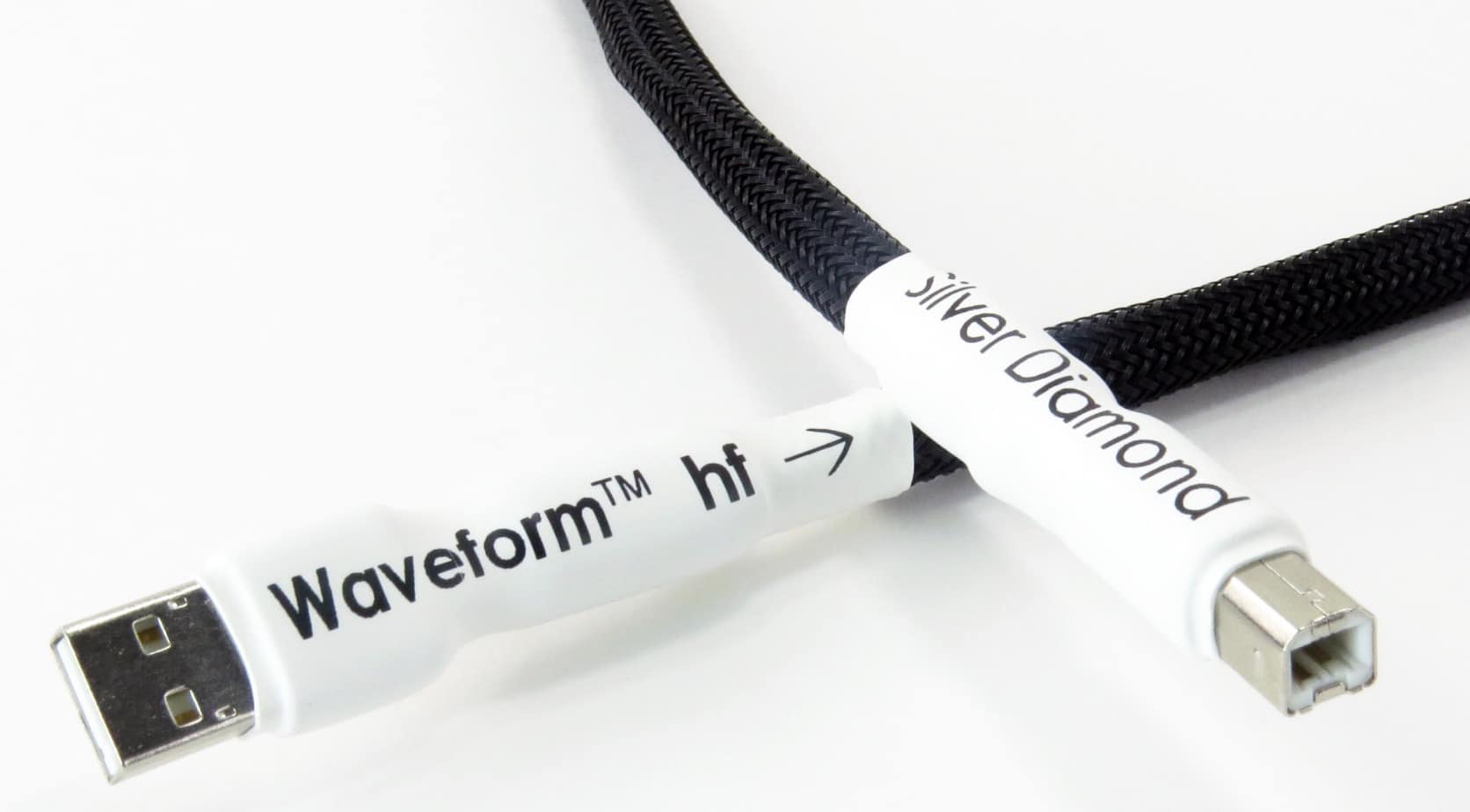
Looking for a high end USB cable? Paul Rigby reviews the Silver Diamond Waveform hf
One of the main uses for any USB cable will be as a link from a general purpose laptop computer (one of the worst digital music sources you can invent) to a decent DAC. What a USB cable has to do is remove – or rather block in the first place – the noise inherent in any laptop, before it even hits the DAC. Don’t forget, laptops are general utility devices and they’re superb at being computers. They are, in fact, designed to be just that. They’re not designed as specialist music devices. This means that, when a laptop is playing your music, it’s also house keeping in terms of hard disk memory movements, keeping an eye on various clocks, checking RAM chips, pre-loading various operating system tools, updating others of a similar nature, refreshing windows, checking the status on 10,000 other commands and on and on. All of this takes energy, all of this uses resources and all of those resources makes noise (and I haven’t even mentioned an internal fan yet). The same noise that is then transferred all over the computer, including your music software player, which then travels up the USB cable and infests your DAC, masking the music that comes from that box and reducing the sonic abilities of your hi-fi and speakers.
If your USB cable can block out the noise and just transfer the music as well be an efficient basic signal carrier then you’ll have a much more enjoyable musical experience. I was interested to know how the Waveform would perform under these conditions.
As for the cable itself? Tellurium Q is reticent in revealing its design technologies for fear of duplication from other outfits (this sort of things does go on so TQ is probably wise to keep quiet). So what does it sound like then?
SOUND QUALITY
One of the principle jobs of any DAC and thus the USB connecting it to a digital source, is to translate CD-quality files. It’s very nice to play hires sound files and they do sound far superior but there is so much CD quality music out there that 16bit/44kHz frankly dominates. Hence, any digital component of any flavour has to get to grips with this resolution. There is no point in a source, DAC or indeed a USB cable being snoozy and sluggish at lower resolution music and only coming to life from 24bit/96kHz and up because, in broad terms, digital life is still ruled at 44.1kHz.
Hence, I used the Silver Diamond with an energetic and dynamic track, Hedonism from Skunk Anansie. I have heard this WAV, from a laptop source, sound bloated and uncontrolled with bass swamping the lower end and bleeding into the upper frequencies. Not here. The great thing about the Silver Diamond was just how much control it utilised in controlling potentially unruly frequencies. Yes, there was a strong and powerful bass beat on this track but it was pushed behind the vocal and behind other instruments. It didn’t move in front of everything to dominate, as I have heard on occasion. The bass was also focused, never boomy and didn’t leach into the midrange. This meant that the soundstage was ordered with a level of space to give other instruments room to play. Because it wasn’t crowded, it also provided space for reverb on guitar strums while the vocal subtleties were recognised, giving the delivery an emotional direction.
So what of higher resolution fare? I tried jazz at 24bit/96kHz and Sonny Rollins’ St Thomas. This is where the cable sprang to life and began to really show its colours because it dazzled. For example, the Rollins’ sax had a distinct reedy, breathy, airy effect that produced a distinctly humanising feel to the music. This organic effect was added to during the drum solo. The sense of a guy hitting a piece of stretched skin over a hollow chassis was very real indeed via the Silver Diamond. The initial strike bounced a wee bit to reflect the wooden drumstick on the skin, producing a hollow sound. It was quite delightful. The bass, meanwhile had a fascinating resonance. There was a very real tonal sense that this upright was made of wood.
So I tried a higher resolution file still, 24bit/176.4kHz and Looking For a Home from Kevin Greeninger & Dayan Kai. Two guys, two voices, two guitars and that’s it.
The Silver Diamond was all over the track like a rash. What stood out here was the separation of the two voices. Singing in harmony, it was easy to differentiate each voice into separate entities as well as enjoy that ‘third voice’, the harmony itself. Next was the subtle guitar sustain effect and the type of scraping noises as players move along the frets or bend the strings. Those fragments were clear and open with this USB cable. Finally, there was a fine sense of sonic attack as a string was plucked. A transient sharpness that arrived and left in a jiffy.
CONCLUSION
A quite brilliant USB cable that keeps harmful noise out of the picture, giving your DAC a better chance of providing top quality music, the Tellurium Q Silver Diamond Waveform hf is an all purpose cable for a host of digital solutions. As such, it should be a regular part of your digital toolkit.
TELLURIUM Q SILVER DIAMOND WAVEFORM HF USB CABLE
Price: £888 per metre
Tel: 01458 251997
Website: www.telluriumq.com
GOOD: low noise, dynamic reach, focus, soundstage discipline, midrange insight
BAD: nothing
RATING: 9
[Don’t forget to check out my Facebook Group, The Audiophile Man: Hi-Fi & Music here: www.facebook.com/groups/theaudiophileman for exclusive postings, exclusive editorial and more!]
REFERENCE SYSTEM
Leema Antilla IIS Eco CD Player
Aesthetix Calypso pre-amp
Icon Audio MB845 Mk.II monoblock amplifiers
Quad ESL-57 speakers with One Thing upgrade
Vertex AQ & Tellurium Q cables
Blue Horizon Professional Rack System
Harmonic Resolution Systems Noise Reduction Components
All vinyl was cleaned using an Audio Desk’s Ultrasonic Pro Vinyl Cleaner

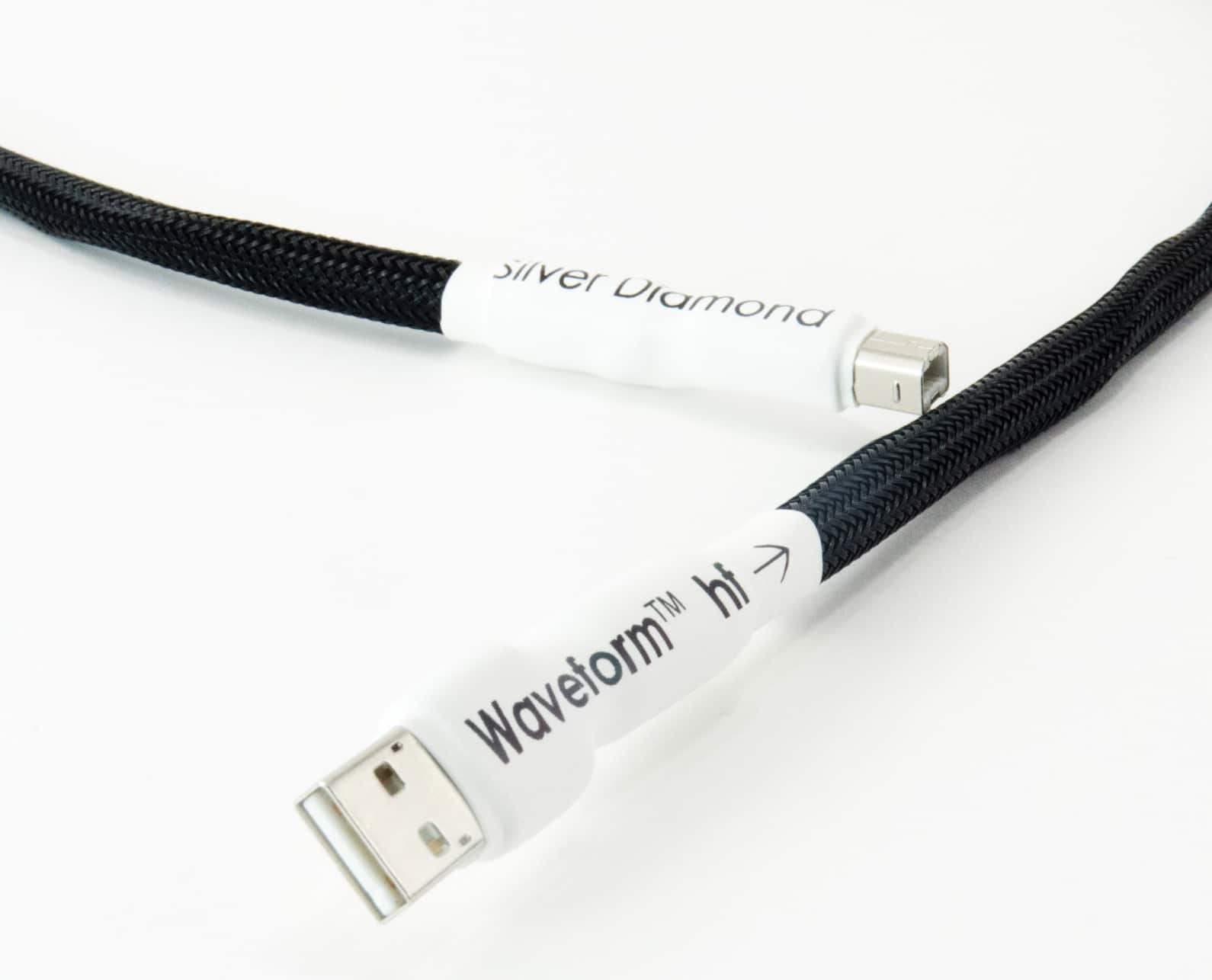
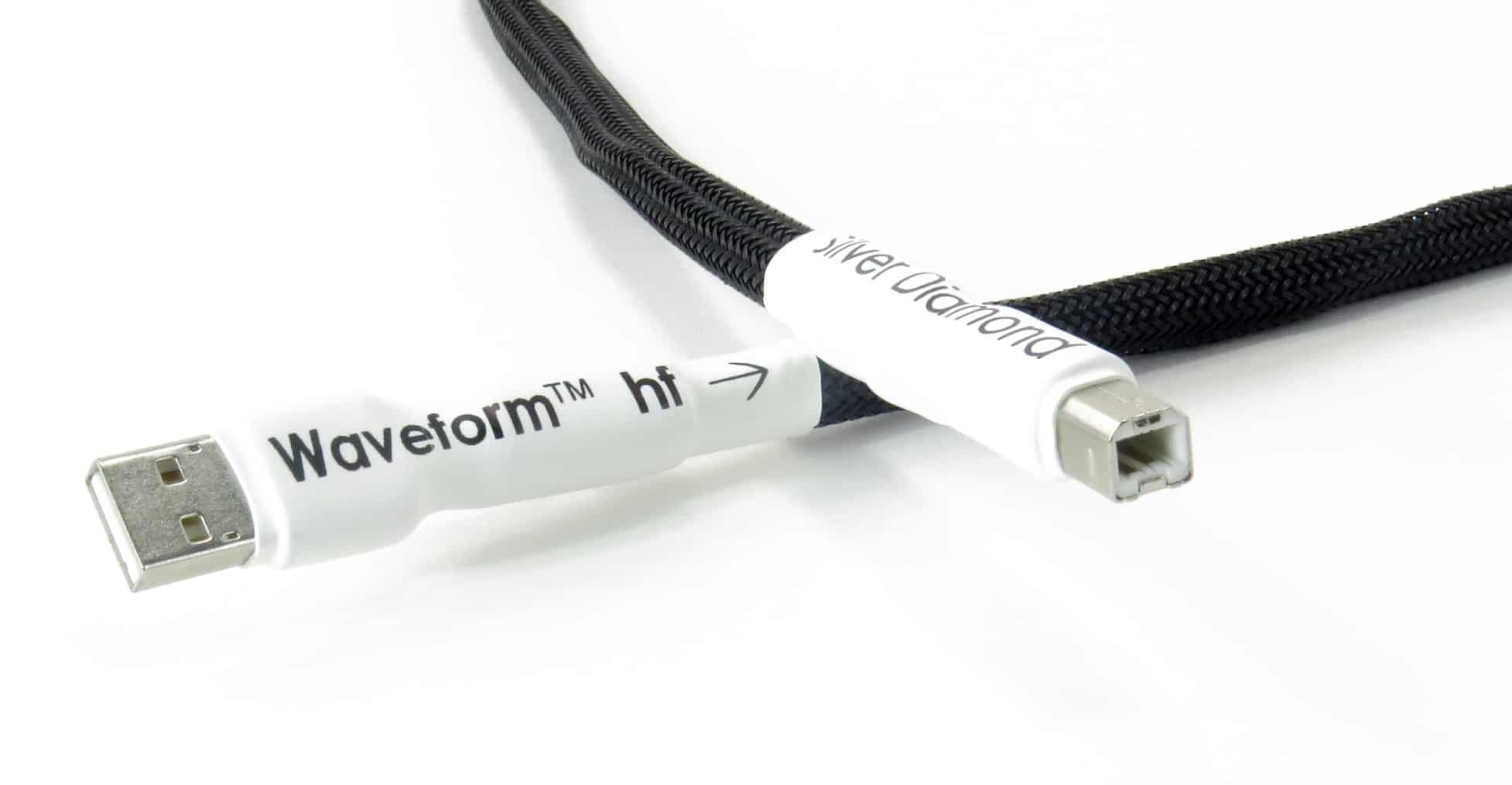
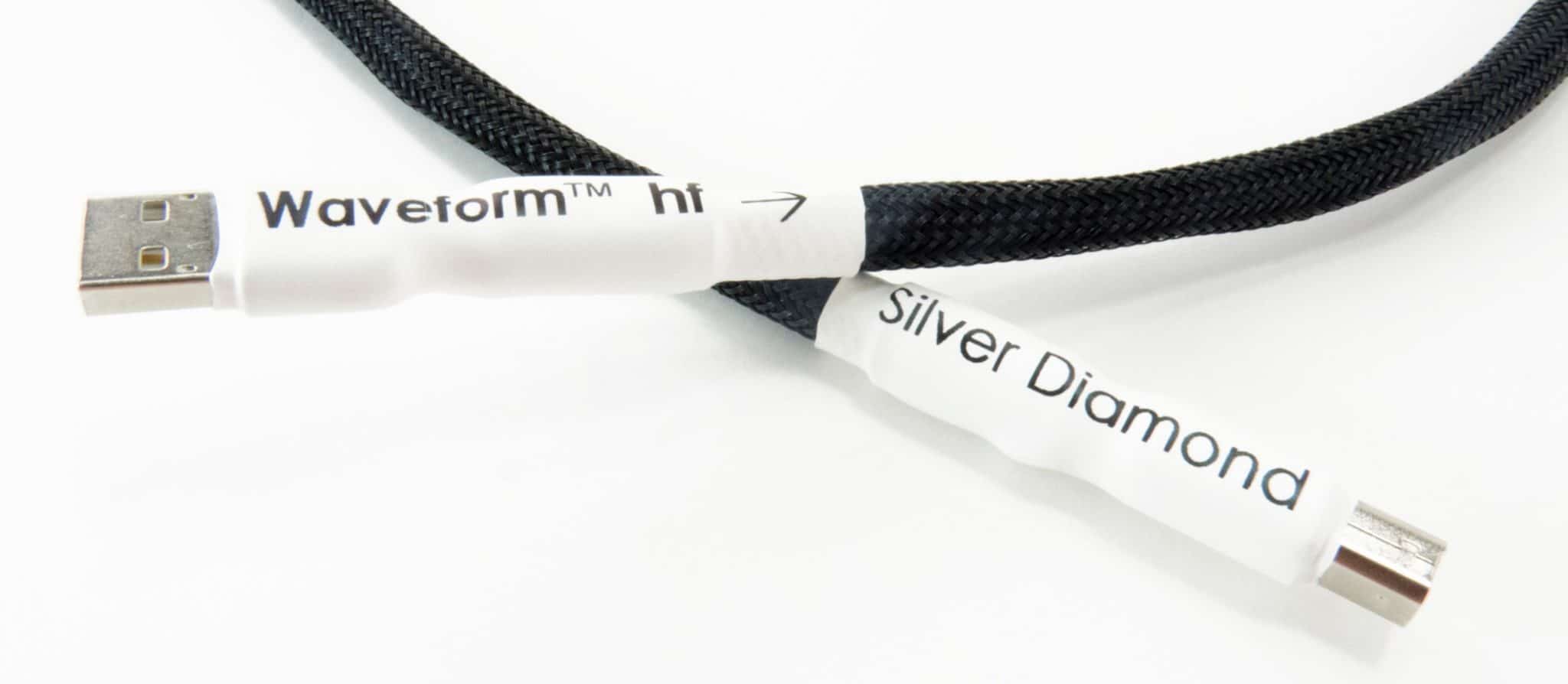
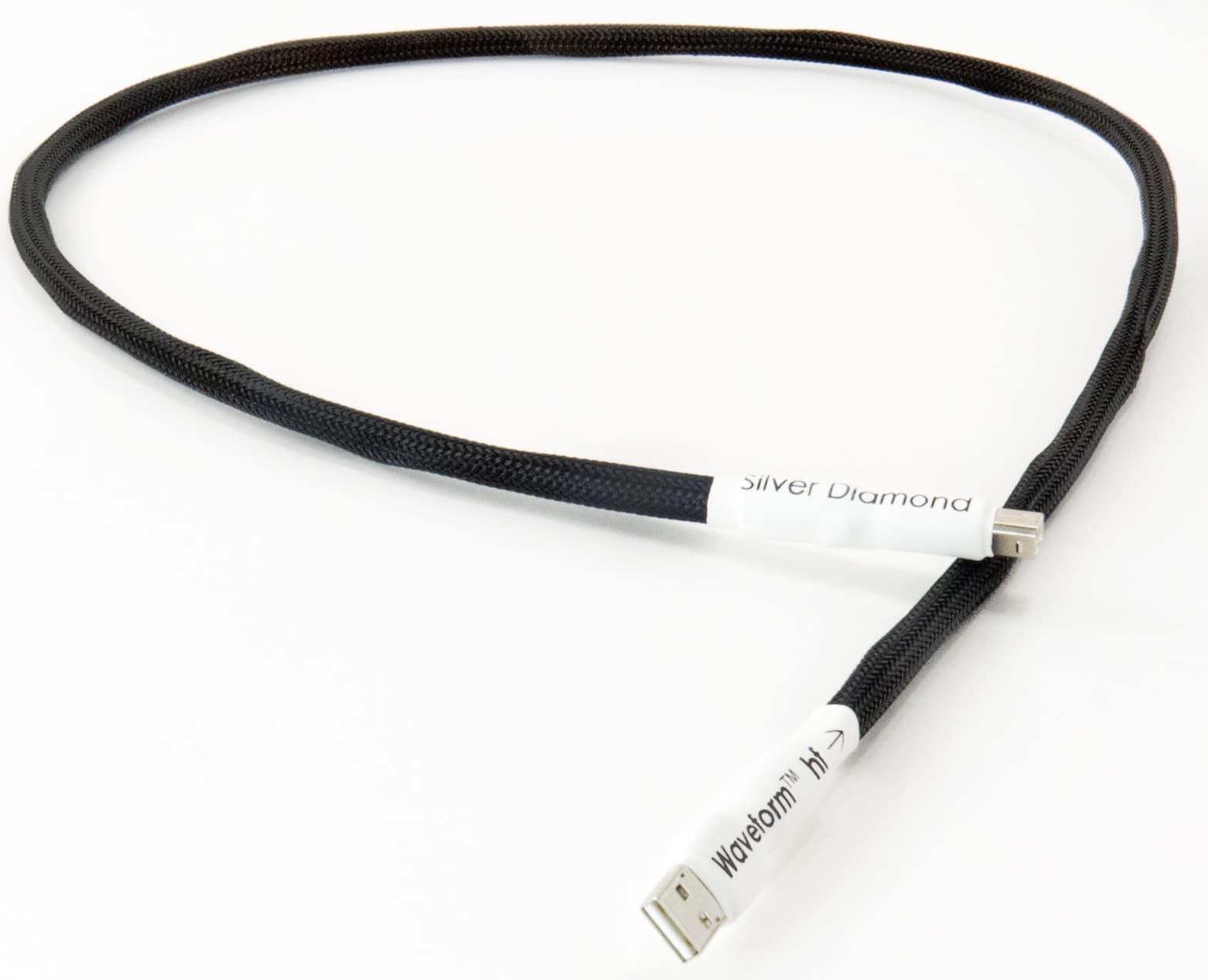



Hi
I was just curious as to the process by which the cable physically rearranges the bit-stream to make the music sound different. I had assumed that USB cables are pretty dumb wires that just carry a signal.
I have been data network designer for some years and even I didn’t realise that some USB cables could ‘read and rearrange’ the data that they are carrying so that, for instance, ‘The bass was also focused, never boomy and didn’t leach into the midrange’. I guess that is why they are so rediculously expensive.
Hi Mike – I agree with you, a cable is a dumb wire. But it can be designed to do two things: carry an audio signal efficiently and, secondly, to effectively protect against noise and other ‘jitter’-type effects. There’s nothing intelligent going on in the cable it’s just doing a simple job, well. Most give-away, cheapo cables you find with digital kit tend to be poor at doing that job. If I can speak generally, using them, in practical sonic terms, you’ll hear music that sounds harsh, bright and edgy while you tend to cover your ears at high volumes during crescendos. Listening fatigue is high because of this. Most people then blame the hifi or the CD or download or stream and, fair enough, that might party be true but, often as not, it’s mostly the cables producing most of that nastiness and that’s down to noise of varying types that interfere with the cable. That can be noise from the hi-fi electronics running down the cable, given a piggy back by the audio signal, outside vibration, static on the cable itself, wi-fi signals in the air, mobile signals in the air, a dirty means signal, etc, etc. Computer data is more robust to these affects so data transfers are generally not affected – music is rather more fragile to change, though.
Listening fatigue (from music that sounds harsh, bright and edgy) is most commonly down to poor mastering of the audio for digital media.
It’s very hard to think why a digital cable needs to cost ¬£888 when, as you say, it’s doing a simple job. A cable either matches the USB 2.0 spec or it does not.
There is no jitter caused by a cable, as with all digital audio bus transfers, the data is buffered at the recieving end (the DAC) and then clocked. No clocking in the cable.
The data either arrives complete or it does not. If it does not, then the DAC cannot recreate an analogue audio signal. It will just fail in the most obvious way.
>Computer data is more robust to these affects so data transfers are generally not affected
But the data going down the cable *is* ‘computer data’ , not music. It’s not ‘music’ until the DAC concerts it to an analogue signal.
Mastering is but one possible cause of that, Simon. There are a host of other causes out there that have nothing to do with mastering – and have nothing to do with cabling either, for that matter. Although cabling is one of a basket of problems affecting hifi-produced music. And cabling should not be ignored, whether you’re talking digital, analogue, mains or more. Cabling can change and affect the flow of the signal in various ways. The internal structure of the cable can influence that signal which will affect the music you hear. More than that though are the parasitic effects of high-frequency noise of varying types that piggy-back on the same signal to veil detail.
So the job itself might be a simple one but that doesn’t mean that the process is not complicated by other factors.
You may well disagree with my reply and that’s fine. I’m not hear to change your mind. That’s not my job. My job is to report on my own findings and tests and for you to use (or not) those findings as *part* of your own research when purchasing hi-fi equipment. If what I do and what I say doesn’t tally with your own view of hifi and how it should be reviewed then there’s plenty of other critics out there who might very well. I actually made a video on this very point, if you’d like to peruse: https://youtu.be/-NWuE-1yFJ8
‘concerts’=converts